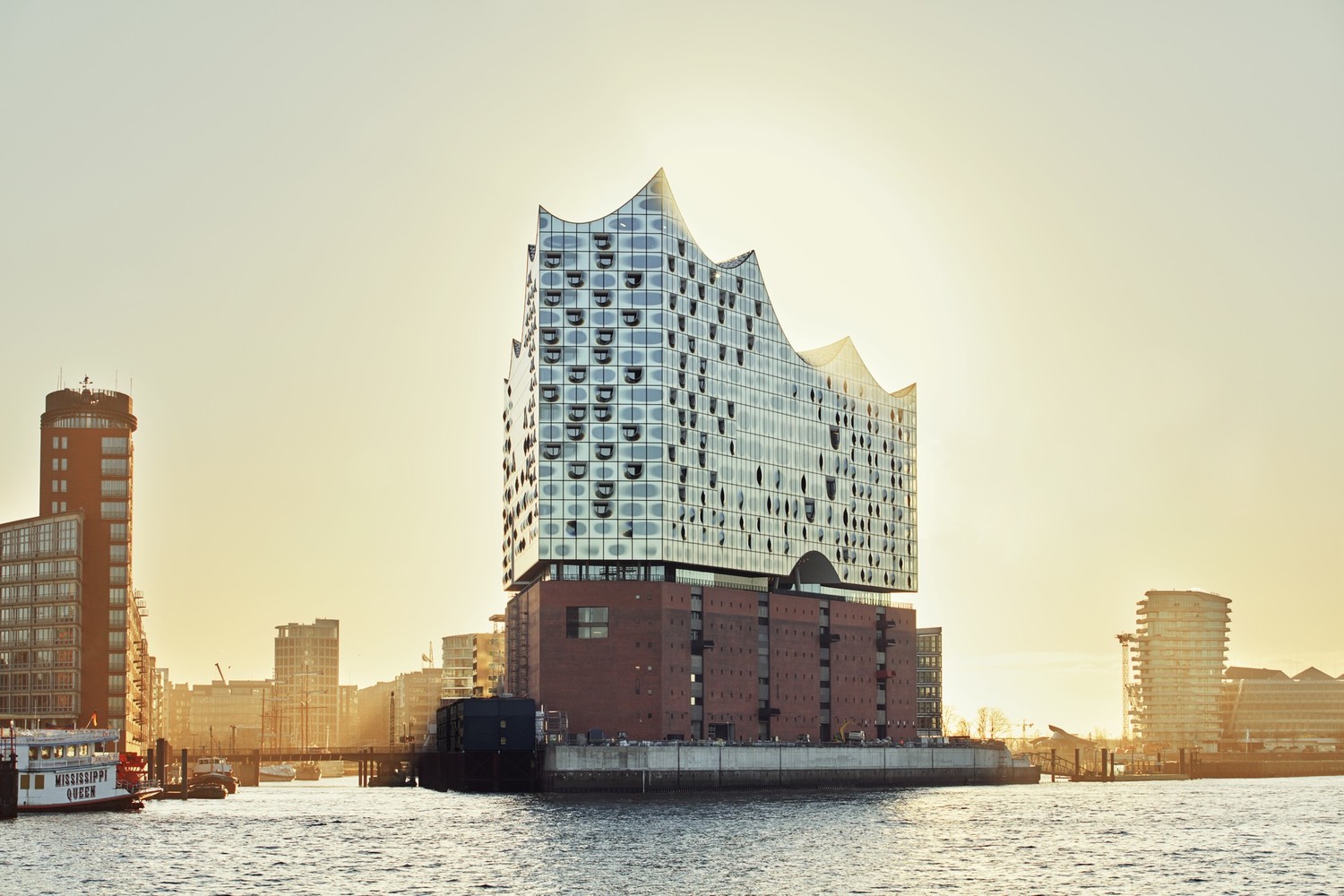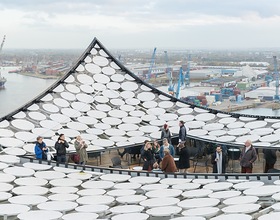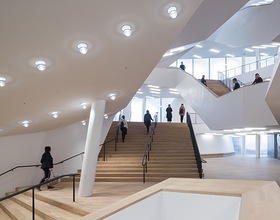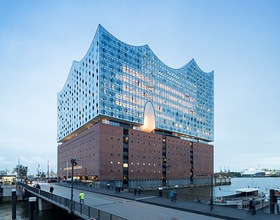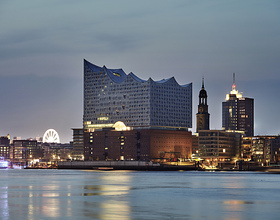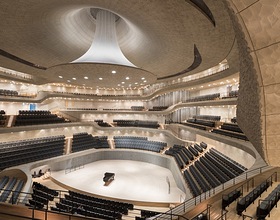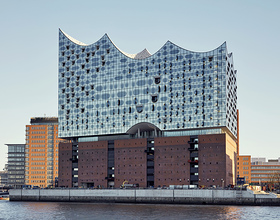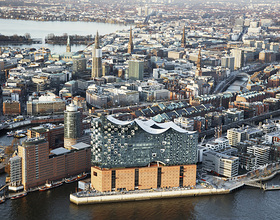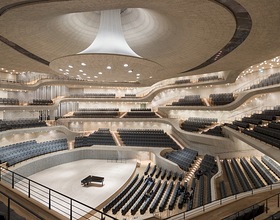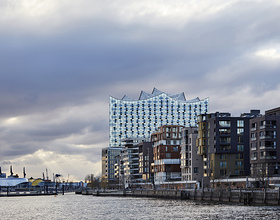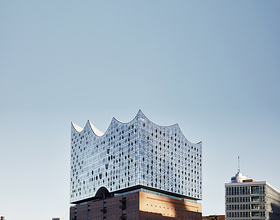ELBPHILHARMONIE HAMBURG
-
The Elbphilharmonie on the Kaispeicher marks a location that most people in Hamburg know about but have never really noticed. It is now set to become a new centre of social, cultural and daily life for the people of Hamburg and for visitors from all over the world. The new philharmonic is not just a site for music; it is a full-fledged residential and cultural complex.
The concert hall, seating 2100, and the chamber music hall for 550 listeners are embedded in between luxury flats and a five-star hotel with built-in services such as restaurants, a health and fitness centre, conference facilities.
Long a mute monument of the post-war era that occasionally hosted fringe events, the Kaispeicher A has now been transformed into a vibrant, international centre for music lovers, a magnet for both tourists and the business world.
The Kaispeicher A, designed by Werner Kallmorgen, was constructed between 1963 and 1966 and used as a warehouse until close to the end of the last century. Originally built to bear the weight of thousands of heavy bags of cocoa beans, it now lends its solid construction to supporting the new Philharmonic. The structural potential and strength of the old building has been enlisted to bear the weight of the new mass resting on top of it.
The practice’s interest in the warehouse lies not only in its unexploited structural potential but also in its architecture. The robust, almost aloof building provides a surprisingly ideal foundation for the new philharmonic hall. It seems to be part of the landscape and is not yet really part of the city, which has now finally pushed forward to this location.
The harbour warehouses of the 19th century were designed to echo the vocabulary of the city’s historical façades: their windows, foundations, gables and various decorative elements are all in keeping with the architectural style of the time. Seen from the River Elbe, they were meant to blend in with the city’s skyline despite the fact that they were uninhabited storehouses that neither required nor invited the presence of light, air and sun. But not the Kaispeicher A: it is a heavy, massive brick building like many other warehouses in the Hamburg harbour, but its archaic façades are abstract and aloof. The building’s regular grid of holes measuring 50 x 75 cm cannot be called windows; they are more structure than opening.
The new building has been extruded from the shape of the Kaispeicher; it is identical in ground plan with the brick block of the older building, above which it rises. However, at the top and bottom, the new structure takes a different tack from the quiet, plain shape of the warehouse below: the undulating sweep of the roof rises from the lower eastern end to its full height of 108 metres at the Kaispitze (the tip of the peninsula).
The glass façade, consisting in part of curved panels, some of them carved open, transforms the new building, perched on top of the old one, into a gigantic, iridescent crystal, whose appearance keeps changing as it catches the reflections of the sky, the water and the city.
The bottom of the superstructure also has an expressive dynamic. Along its edges, the sky can be seen from the Plaza through vault-shaped openings, creating spectacular, theatrical views of both the River Elbe and downtown Hamburg.
Photo credits: Iwan Baan, Maxim Schul
1870 Projects

